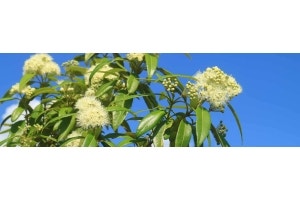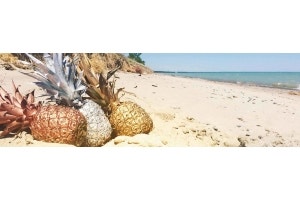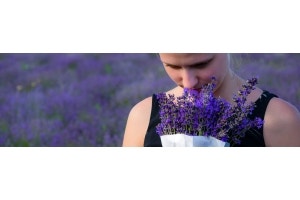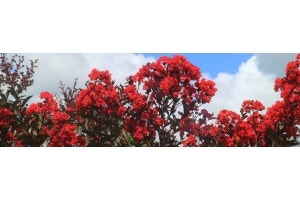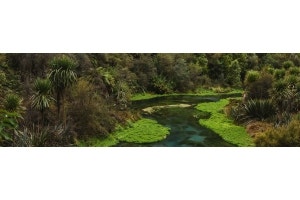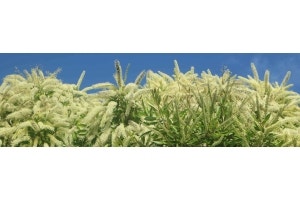
Frost Tolerant or Frost Hardy - What's The Difference?
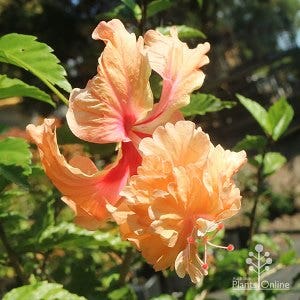
Frost Tender
Some plants are definitely tropical, they need warmth all year, and their leafy growing tips will blacken and rot at the first sign of a single-digit temperature.They need temperatures over 0°C for their roots to stay alive; and prefer something above 10C to thrive and look their best. These are Frost Tender Plants.You'll find these in our Temperature filter under Tropical over 15°C.Many plants we think of as tender or tropical can actually cope with quite cold temperatures, even below zero; providing those temperatures are brief, not too severe, and the plant is prepared for them. Larger-size plants, with woodier trunks, planted in sheltered locations, and into light free-draining soil, will fare best in cold weather.
Light Frost, Frost Tolerant
Mature frost-tender plants in a sheltered location may come through a light frost. Light frost dips just below zero celsius, and for one or two nights only. In our climate advice we make a distinction between Light Frost, or Light Overnight Frost, and Frost Tolerant plants. Frost tolerant plants can stand frost for more than one night, and at single digit negative temperatures. Frost tender plants will not survive this.
Frost Tolerant
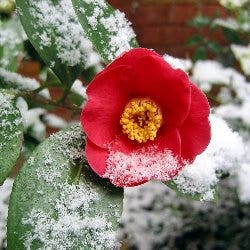 Often plants go into a dormant state where they stop growing, when temperatures get into single digits. Some of thees plants might drop a few leaves, flowerbuds may blacken, or the plant may not look at its best; but the roots will survive and the plant will recover and regrow once the warmer weather returns.
These are Frost Tolerant Plants.You'll find these in our Temperature filter under Frost Free over 0°C and Frost Tolerant below 0°C.That's because it depends on the conditions the plant is growing in, the soil type, and local microclimate and wind shelter, as to how resilient it is when faced with more than a light overnight chill.
Often plants go into a dormant state where they stop growing, when temperatures get into single digits. Some of thees plants might drop a few leaves, flowerbuds may blacken, or the plant may not look at its best; but the roots will survive and the plant will recover and regrow once the warmer weather returns.
These are Frost Tolerant Plants.You'll find these in our Temperature filter under Frost Free over 0°C and Frost Tolerant below 0°C.That's because it depends on the conditions the plant is growing in, the soil type, and local microclimate and wind shelter, as to how resilient it is when faced with more than a light overnight chill.
Frost Hardy
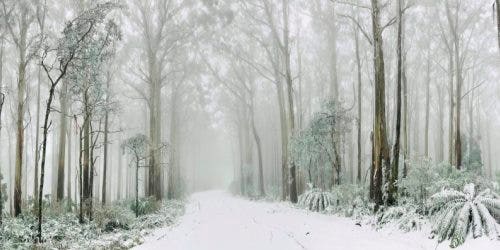 Certain plants are equipped for cold weather, and will sail right through the winter season with no ill effects at all. These plants will continue to grow and flower right through winter, even in snow and frost. Like these beautiful native snow gums. Below-zero temperatures hold little fear; and even temperatures as low as -20°C are no problem for some plants.
These are Frost Hardy Plants.You'll find these in our Temperature filter under Frost Hardy below -10°C.
Certain plants are equipped for cold weather, and will sail right through the winter season with no ill effects at all. These plants will continue to grow and flower right through winter, even in snow and frost. Like these beautiful native snow gums. Below-zero temperatures hold little fear; and even temperatures as low as -20°C are no problem for some plants.
These are Frost Hardy Plants.You'll find these in our Temperature filter under Frost Hardy below -10°C.
Give your plants a chance
If you get winters where you are, be aware that certain parts of your garden may be more plant-friendly than others. A brick, concrete, or stone wall can retain a lot of the warmth of the sun, releasing it at night to make nearby plants cosy. Ventilation outlets from home heating units can pump out warm air into areas of the garden. North facing walls will be warmer and brighter than south facing ones; and areas sheltered from harsh drying winds will be more welcoming to tender plants than exposed locations.
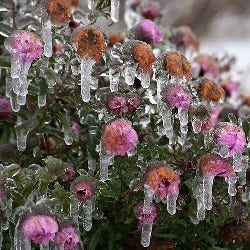 If you're a keen pruner who likes your garden schmick and tidy, you might have to turn a blind eye for a couple of months in the middle of the year.Leaving the dead flower stalks on herbaceous perennials, and delaying pruning large shrubs until spring, can help a borderline tender plant guard itself against the worst of the weather.
If you're a keen pruner who likes your garden schmick and tidy, you might have to turn a blind eye for a couple of months in the middle of the year.Leaving the dead flower stalks on herbaceous perennials, and delaying pruning large shrubs until spring, can help a borderline tender plant guard itself against the worst of the weather. The old stalks and branches shelter young growing points and protect them from snow and frost.
It's also worth leaving plants as long as you can bear, in spring. Plants that look blackened and soft above ground may still be healthy and vital below ground. A spell of continued warm weather can encourage the plant to reshoot and regrow.
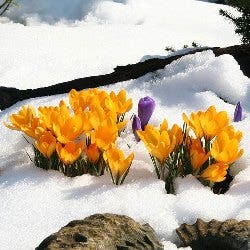 Good news : some plants love a true blue cold winter. Spring bulbs - crocus, snowdrop, tulip, daffodil - will sprout green shoots that emerge through snow. Tulips flower best when they can have at least six weeks of cold weather before they flower. Cabbage, kale, and other brassica relatives take on deeper flavours when the thermometer drops. And the winter frost and snow often kills off pests and bugs that would overwinter and survive in more tropical climates.
Good news : some plants love a true blue cold winter. Spring bulbs - crocus, snowdrop, tulip, daffodil - will sprout green shoots that emerge through snow. Tulips flower best when they can have at least six weeks of cold weather before they flower. Cabbage, kale, and other brassica relatives take on deeper flavours when the thermometer drops. And the winter frost and snow often kills off pests and bugs that would overwinter and survive in more tropical climates. So that's one less thing to worry about!
Which kind of plant are you?
Are you a frost-tender houseplant, snuggled indoors reaching for a cosy sweater at the end of April?Do you frost-tolerantly rug up in lots of layers when autumn cool turns to winter chill?
Or do you go sea swimming right through July, like a resilient frost-hardy snow gum?
Find our cold weather plants
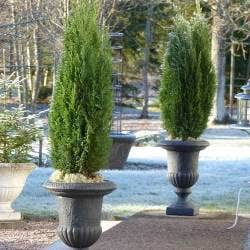 on your desktop -
on your desktop - - click Plants For Places on the menu at the top of the screen
- click Frost Tolerant Plants
- Frost Hardy plants will show as a filter to the side and in the intro text
- click the three line menu icon at the top of the screen
- click Plants For Places
- click Frost Tolerant Plants
- Frost Hardy plants will show as a filter below
























